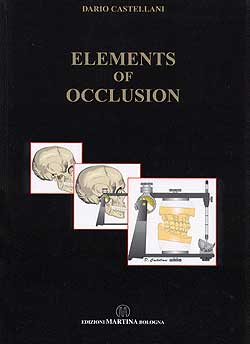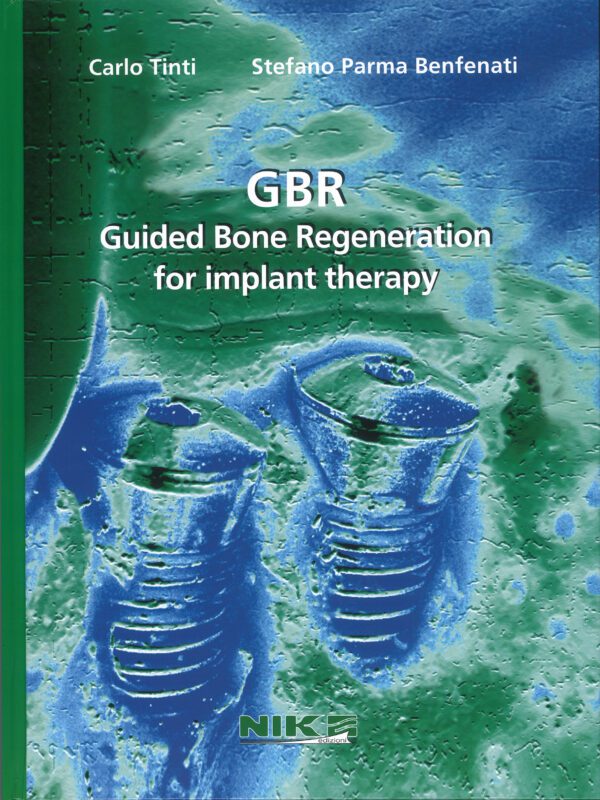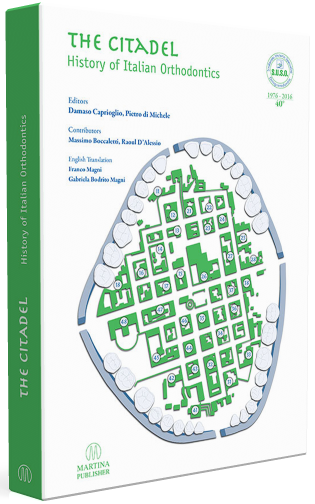Elements of occlusion
Il prezzo originale era: 60,00€.57,00€Il prezzo attuale è: 57,00€.
|
Elements of occlusion
CASTELLANI D.
Pages 160 – 350 color illustrations – hard cover |
Esaurito
Descrizione
Elements of occlusion
ELEMENTS OF OCCLUSION is a title which seems to mean a work of austere Euclidean thoroughness. Actually it aims at being nothing but a user-friendly atlas — a compendium of pictures and information set up to give the topic of temporomandibular occlusion a structural framework. The subject of occlusion, which is preliminary and fundamental, is either often considered superficially or, even when regarded for short-term academic purposes, generally put aside as a set of concepts of little or no use to the real praxis of dentistry.
In this book an attempt has been made to describe the anatomy, physiology and dynamics of the scenario within which any operation of restorative dentistry takes place. Bibliographical references have been intentionally omitted as, in literature, every truth could easily match its opposite. The editorial and iconographic format has been conceived in such a manner as to favor visual memory be the reader either a student or a practitioner.
Moreover, this work aims at being a challenge to the proverbial saying “Occlusion is Confusion,” a concept often used to justify the superficiality and disinterest in what is the heart of the branches of dentistry.
ELEMENTS OF OCCLUSION will merit its definition as an atlas if, by describing the mechanics of the stomatognatic apparatus and its relative functions, it manages to provide the reader with an updating support as an operational map of reference. Furthermore, this work conceals the secret and rather ambitious hope of promoting a different kind of saying: “Occlusion is Function”.
I dedicate this work to my daughters Camilla and Lucia, my primary sources of faith and optimism.
Dario Castellani
|
DETERMINANT FACTORS OF OCCLUSION ANATOMY OF THE TEMPOROMANDIBULAR JOINT, MUSCLES AND DENTITION 1. Temporomandibular joint 2. Masticatory muscles 3. Biomechanics of the temporomandibular joint 4. Dentition and the occlusal table OCCLUSAL RELATIONSHIPS AND OCCLUSAL SCHEMES OCCLUSAL RELATIONSHIPS BETWEEN DENTAL ARCHES 1. Occlusal relationship between anterior teeth 2. Occlusal relationship between posterior teeth OCCLUSAL CONTACTS 1. Static occlusal contacts 2. Dynamic occlusal contacts THE MANDIBULAR LEVERAGE ALTERATIONS IN OCCLUSAL CONTACTS MANDIBULAR MOVEMENTS MANDIBULAR MOVEMENTS: ROTATION AND TRANSLATION 1. Rotation 2. Translation LATERAL EXCURSIONS 1. The Bennett angle 2. The Bennett movement PROTRUSIVE MANDIBULAR MOVEMENT 1. Incisal guidance 2. Condylar guidance MANDIBULAR MOVEMENTS ON THE SAGITTAL PLANE (POSSELT DIAGRAM) MANDIBULAR KINETICS 1. Frontal plane 2. Sagittal plane MANDIBULAR MOVEMENTS AND PANTOGRAPHIC TRACINGS PANTOGRAPHIC TRACINGS 1. Pantographic tracings on the horizontal plane 2. Pantographic tracings on the sagittal plane CRANIOMANDIBULAR RELATIONSHIP (OCCLUSAL SPACES) CRANIOMANDIBULAR RELATIONSHIP 1. Vertical craniomandibular relationship 2. Horizontal craniomandibular relationship 3. Maximal intercuspation or centric relation? 4. Recording techniques 5. Deconditioning technique 6. Clinical recording of the centric relation 7. Materials and methods for craniomandibular recordings 8. Anatomical references of occlusal significance MECHANICAL OCCLUSAL EQUIVALENTS MECHANICAL EQUIVALENTS FOR THE REPRODUCTION OF OCCLUSAL DETERMINANTS
SUGGESTED READINGS |




